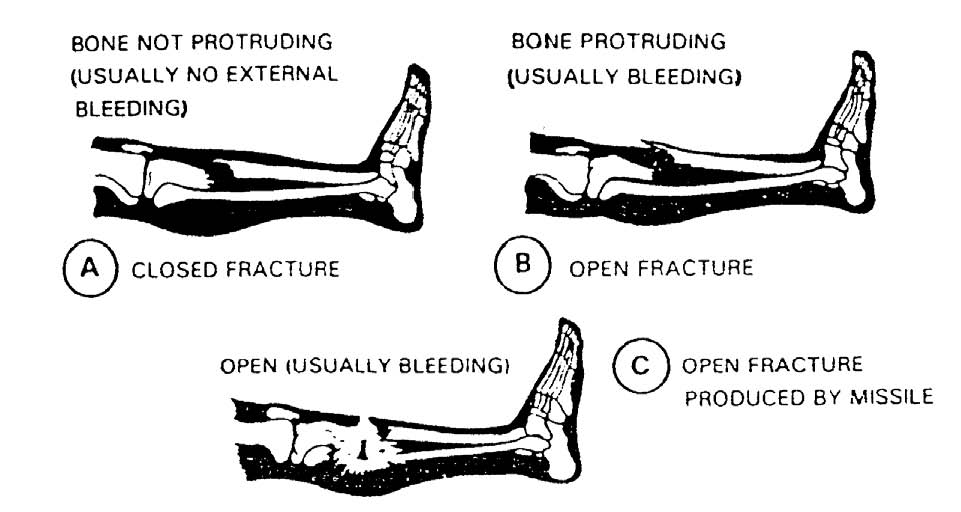Treating Fractures in the Field
Lesson 1: Fractures
and Related Injuries
Section II: Fractures
1-5
1-5. CLOSED AND OPEN FRACTURES
a. Closed Fracture. A closed fracture (see figure 1-3A) is a fracture in which the skin is not broken. A closed fracture may result in significant loss of blood due to internal bleeding (bleeding into surrounding body tissues or into a body cavity). This blood loss may result in shock.
b. Open Fracture. An open fracture is one in which the skin is broken (penetrated). The source of the penetration may have been the end of a fractured bone (see figure 1-3B) or a foreign object, such as a bullet, which penetrated the skin and fractured the bone (see figure 1-3C). If an open wound is caused by a fractured bone, the bone may remain visible or it may slip back below the skin and muscle tissues. An open fracture usually results in more blood loss than does a closed fracture since the blood can escape through the open wound. There is a risk of shock from blood loss. Infection is also a major concern since the skin is broken.
Figure 1-3. Examples of fractures.


